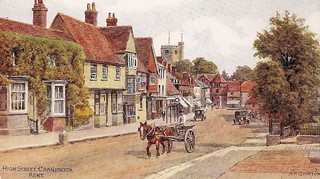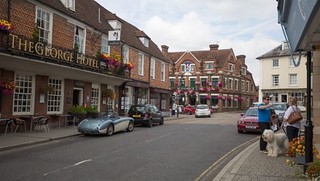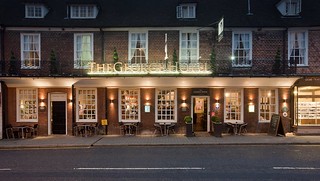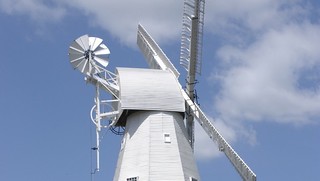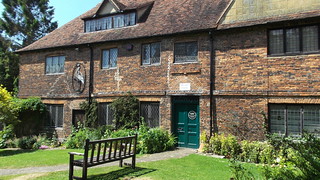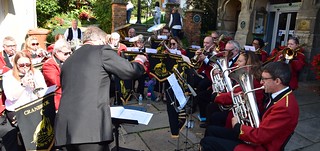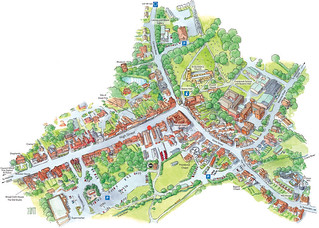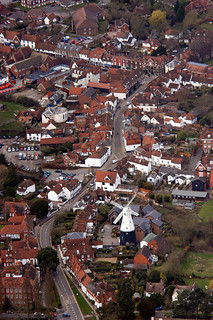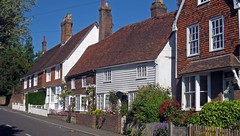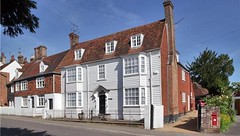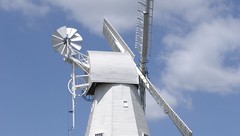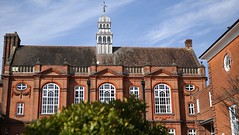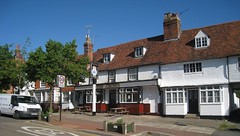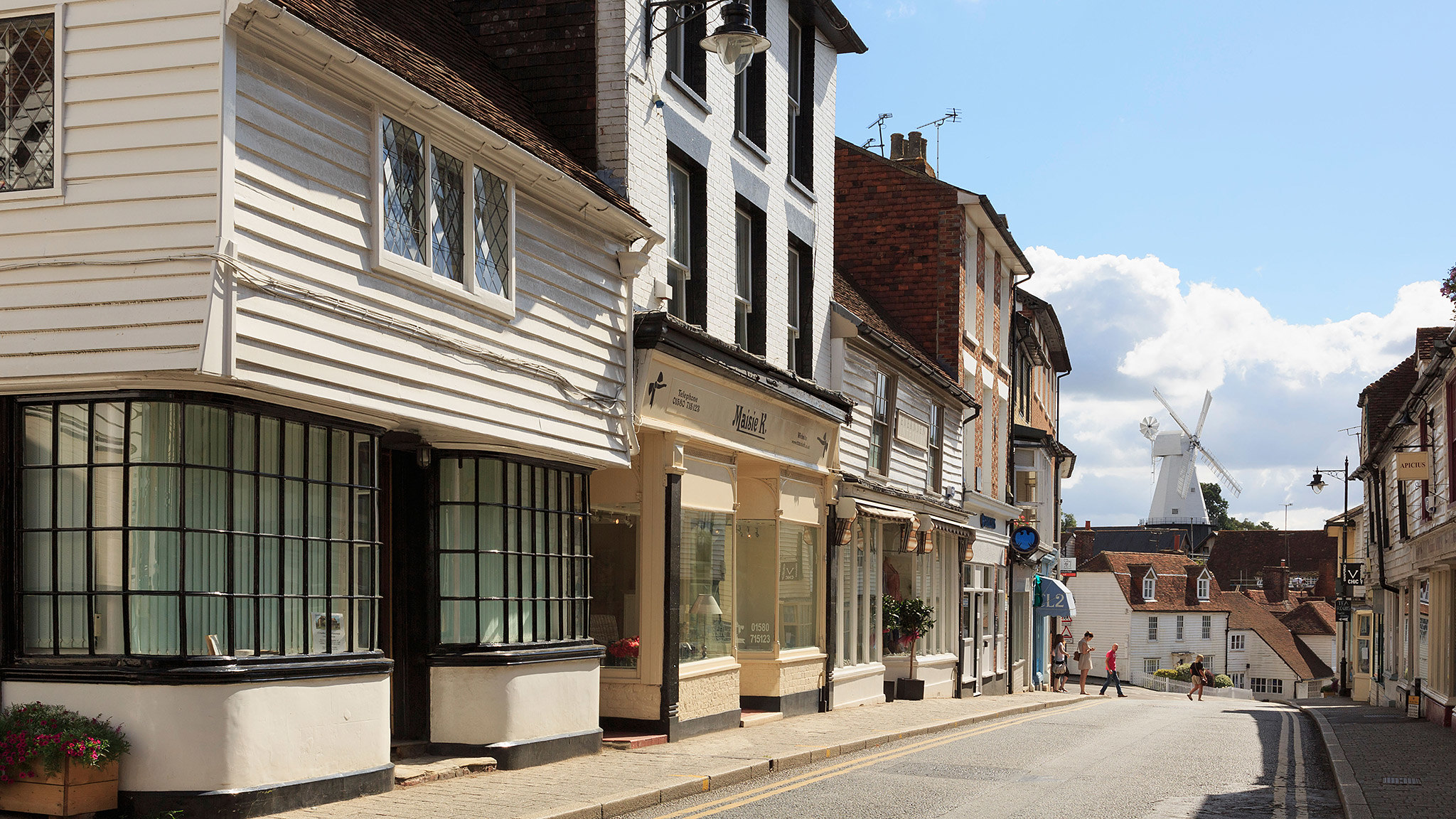
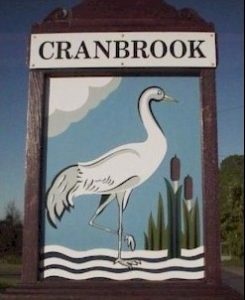
Cranbrook
Cranbrook
Sometimes called the Capital of the Kentish Weald, Cranbrook looks and feels much as it has done for centuries: a peaceful small town of weatherboarded houses, surrounded by orchards and farmland.
The name 'Cranbrook' is derived from the cranes that traditionally frequented the town's little stream and the crane is visible today in the town's emblem. Cranbrook is mentioned in the Domesday Monachorum in 1070 and it is thought that this is around the time it became more of a formal settlement. Surrounded by the pretty Kentish countryside, Cranbrook has an enchanting quality with its narrow 'olde worlde' street at one end of town and a mix of quaint weather-boarded buildings and grander, graceful architecture.
The north end of the town is dominated by an impressive Union Windmill, built in 1814, which is the second tallest surviving windmill in the British Isles. The windmill is open to the public on specific afternoons during the summer.
Cranbrook's high street is home to an eclectic mix of establishments including those selling antiques and 'bric a brac', gift shops, delis, a toy shop, a fine jewelers and a number of high quality fashion boutiques. There are also several high street banks, a post office and a well-stocked supermarket.
For those requiring light refreshment or something more substantial, there are a number of pubs, restaurants, coffee bars and tea rooms along the main high street or within easy reach on foot.
There are several picturesque Walden villages within easy driving distance of Cranbrook, including Goudhurst, Hawkhurst, Benenden and Biddenden all with their own unique charm.
Historic Cranbrook
Historic Cranbrook
A hamlet probably began to grow here in the 11th Century. By the end of the 13th century, the village was of sufficient importance to be granted the right by King Edward I to hold a market.
What transformed Cranbrook's fortunes in the 14th century and for the next two hundred years was the introduction of the wool weaving trade from Flanders. The wealth resulting from the broadcloth industry is reflected in the magnificence of the mediaeval church and the surviving large houses and Cloth Halls.
In 1573 Queen Elizabeth I visited the town and received a loyal address of welcome at the George Inn.
In the 17th century agriculture took over as the principal industry and Cranbrook developed as a market town for the area. Hops and fruit became important to the economy of the area in the 18th century.
The poor quality of the roads in the Weald at this time meant that people's needs could be most economically met by local tradesmen. So the town continued to prosper. But the new railway in the 19th century brought cheaper products of the Industrial Revolution and outward access to bigger and better markets. The town's wealth declined, with the result that owners tended not to demolish buildings to make way for more practical ones. Thus we can enjoy an exceptional concentration of ancient wealden buildings today.
If you would like to find out more about the Great Fire of Cranbrook, the Frittenden Forgers, the famous Cranbrook Colony of artists and many other intriguing topics visit the museum in Carriers Road.
Cranbrook Today
Cranbrook Today
The parish of Cranbrook contains a population approaching 6000 souls. The town retains its dense mediaeval layout of streets and alleys, with a number of buildings of great interest dating from the 15th to the 19th century. These display all the elements of wealden building: timber frame, weatherboard, stucco and the rarer and more local mathematical weathertiling which mimics brickwork. The two main streets contain numerous enchanting and individual shops, far removed from the uniform stores found in most towns.
There are specialists in art materials, antiques and cheeses. Galleries vie with unusual gift shops; old-style ironmongers rub shoulders with furniture experts and a maker of bespoke lampshades.
Travel agents, banks, accountants, solicitors and estate agents all contribute to the commercial life of Cranbrook. In fact there is almost nothing that you cannot obtain in the peaceful atmosphere of this attractive town.
Cranbrook is an ideal centre for exploring Kent and Sussex, and a fascinating place to bring guests. Visitors are served by 3 free car parks, tucked beside one of which there is a supermarket.
St Dunstans Church
St. Dunstans Church
The church stands on a site believed to have been occupied by two earlier churches, Saxon and Norman. The present building of local sandstone was begun in the middle of the 14th century and completed in the 16th century and because of its size has been referred to as the `Cathedral of the Weald'. This beautiful church owes its splendour to the material prosperity of Cranbrook during the 15th and 16th centuries as a centre of the cloth industry. A stone staircase leads to a room over the porch which was originally a repository for church valuables. The room is reputed to have been used later, in Queen Mary's reign, for the confinement of protestant martyrs. The clock mechanism was the prototype for that of Big Ben. The organ is part of an instrument demonstrated at the Great Exhibition of 1851. A detailed guide is available in the church.
The church was used by the band to make their first two recordings and is also regularly used to hold concerts throughout the year.
The George Hotel
The George Hotel
Dating back to 1300, The George is one of Cranbrook’s most historic buildings having played host to King Edward I in 1299, and Queen Elizabeth I in 1573. Yet the hotel’s rich history is fused with a contemporary twist – the magnificent staircase, flanked by two full suits of armour, leads up to 12 stunning, individually-designed rooms, combining period features with fresh, modern décor.
Perfectly positioned to enjoy the outstanding local beauty of the Kent and Sussex countryside, The George is the ideal base from which to explore the numerous attractions the area has to offer, such as Sissinghurst Castle Gardens, Royal Tunbridge Wells, and the Cinque ports of Tenterden.
Union Windmill
Union Windmill
Standing at the highest point overlooking the historic Wealden town of Cranbrook and maintained in working order, this Grade 1 Listed Building is the tallest surviving "smock mill" in the British Isles. Managed by Volunteers of the Cranbrook Windmill Association, the windmill is open at regular times from the end of March to the end of September each year.
Cranbrook Windmill was built for Mary Dobell by the Cranbrook millwright, James Humphrey, in 1814, just before the end of the Napoleonic Wars, to set up her son, Henry, in business. After Napoleon was defeated in 1815, there was a great depression in England and many businesses went into bankruptcy, including Henry Dobell's in 1819. As a result, it was conveyed to and operated by a union of creditors, local farmers and businessmen, hence the name, "Union Mill". When Mary Dobell's debts had been paid off, it was sold to John and George Russell in 1832 and remained in the Russell family until the death of John's great grandson, another John Russell, in 1958.
Originally the mill had common sweeps with canvas to catch the wind and the cap was turned manually by a chain and Y-wheel. However, in 1840 the Russells decided to modernise the mill. They employed the millwrights Medhurst of Lewes to fit a new iron windshaft and gearwork, as well as the new style Cubitt's patent sweeps. Next, they employed Warrens, the millwrights of Hawkhurst, to fit a fantail.
In 2014 we celebrated the Bi-centenary of the building of the mill. The Celebrations kicked off on Saturday 10th May with the unveiling, by Helen Grant MP, of a plaque on the Vestry Hall in Cranbrook, commemorating the life of the last miller, John Russell, who selflessly refused to sell the Mill and its surrounding land and buildings to property developers, and instead transferred it to the Kent County Council for a nominal sum, on condition that they maintained it in perpetuity. There followed a month of Events and Celebrations, including an important Exhibition on the History of the Mill, performances by the Cranbrook Town Band and two local Groups of Morris Dancers.
Cranbrook Museum
Cranbrook Museum houses a unique archive covering all aspects of Cranbrook's history. Whether you are researching family history, a business, or a building they will probably be able to help.
The volunteers in the archive rooms are constantly adding to the collections, improving accessibilty and replying to an ever increasing number of enquiries from around the world.
The museum first opened in 1973 and is run as a non-profit organisation staffed entirely by volunteers from Cranbrook Museum & Local History Society, which exists to promote interest in Cranbrook and to preserve for future generations all aspects of its history.
A late 15th century timber framed building, the oldest part was probably used to house the bailiff of the Rectory Farm, belonging to the Archbishops of Canterbury. Internally there are some fine original features including a dragon beam and massive moulded corner post but there have been many later additions and changes of use.
Its tenant in the late 16th century was Richard Taylor, a member of one of Cranbrook’s rich clothier families. In the 1620s the old medieval hall was rebuilt with two new brick chimney stacks whose inglenook fireplaces can still be seen today. During the 17th century the building was in use as the Rectory and the brick facing to the north and west walls was added by Charles Buck, vicar of Cranbrook, in 1683. Evidence of the date of this transformation is recorded in the external plasterwork.
In the 19th century the building was divided into four cottages, which in 1889 were bought by a local solicitor, W T Neve. More external renovations were made and a further date was added. Later, the cottages came into the possession of Cranbrook Rural District Council and, in 1971, one cottage was made available to the Cranbrook & District Local History Society for its museum. As other cottage tenants left, the museum gradually expanded into the vacant properties. After 1995 the whole building was conserved and refurbished by Tunbridge Wells Borough Council and adapted to house the much increased and expanding museum collections, displays and archives.
The building was Grade II listed in 1967.
The Town Band
The Town Band
The Town Band is comprised of about 30 regular brass players who live in the Cranbrook area as well as a few from slightly further afield. Over the years membership has widened as our reputation in the South East has grown, a number of members commute over longer distances from areas such as South East London, Medway and Hastings. We are pleased to have also provided a home to a few of the players from neighbouring Battle Band who "dis-banded" as a full sized brass band around 2016.
The history of the Town band goes back to the 1920′s. It has enjoyed mixed fortunes over the years and the present band was re-formed in the 1960s. Since that time it has gradually grown in membership and the standard of playing has progressed steadily. Current membership includes people of many different ages and professions.
Cranbrook Town Band is self supporting; it’s main income is obtained from concert performances throughout Kent & Sussex during the summer months. It does however take the time to support other organisations and has links with many charities, the British Legion and various churches. In addition the band does what it can to support music in schools and promote brass band music throughout the country.
In these more recent "recession-hit" years with the ever increasing budget restraints councils and schools are facing, many bands have struggled to find new players. Music is no longer part of the curriculum for many secondary school pupils and provision of music lessons is often one of the first things to go when school budgets are tight. This can only be bad news for bands and orchestras of the future with a lack of younger people able to play an instrument. We were delighted to have been able to go some small way to help with situation by providing free music lessons in a number of local primary schools and as a result were able to form a youth/training band which rehearses prior to the main band on a Thursday evening. A number of the pupils from the training band have now joined the main band and many concerts include a second half performance from the training band, albeit with a little help from some of the senior members.
In 2016 the band became aware that they would soon no longer be able to rehearse in the Congregational Church in the centre of Cranbrook, a venue they had been using for a number of years since their earlier move from Angley School (Now The High Weald Academy). And so in 2017 the band found itself without a rehearsal venue and despite appeals to the local community were not able to find another suitable venue in Cranbrook, our home for nearly 100 years. So reluctantly we had to look outside the town for a permanent home and are now comfortably settled in the neighbouring village of Hawkhurst, a short ten minute drive from Cranbrook. We rehearses at the Primary School from 8pm to 10pm on Thursdays with our Junior Section rehearsing beforehand from 6.30pm to 7.30pm. Despite the move and no longer being based in Cranbrook, the members of the band felt that we should not rename the band but continue to remain the Cranbrook Town Band and build upon our success and history.
Performing in Cranbrook
Performing in Cranbrook
Over the years the band have taken part in many events and played many concerts in Cranbrook, here are some articles on just a few of the more recent ones.
2018 – Farr Exceeding Expectations
Cranbrook Concert
St. Dunstans Church
Cranbrook Remembrance Parade
High on a Hill with Windy Miller
Street View
From the Air
Useful Links
- The Official Website of Cranbrook
- http://www.cranbrook.org
- St. Dunstans Church
- https://www.stdunstanscranbrook.org.uk
- The Geroge Inn
- https://www.thegeorgehotelkent.co.uk/
- Cranbrook Windmill
- http://www.unionmill.org.uk/
- Cranbrook Museum
- http://www.cranbrookmuseum.org

